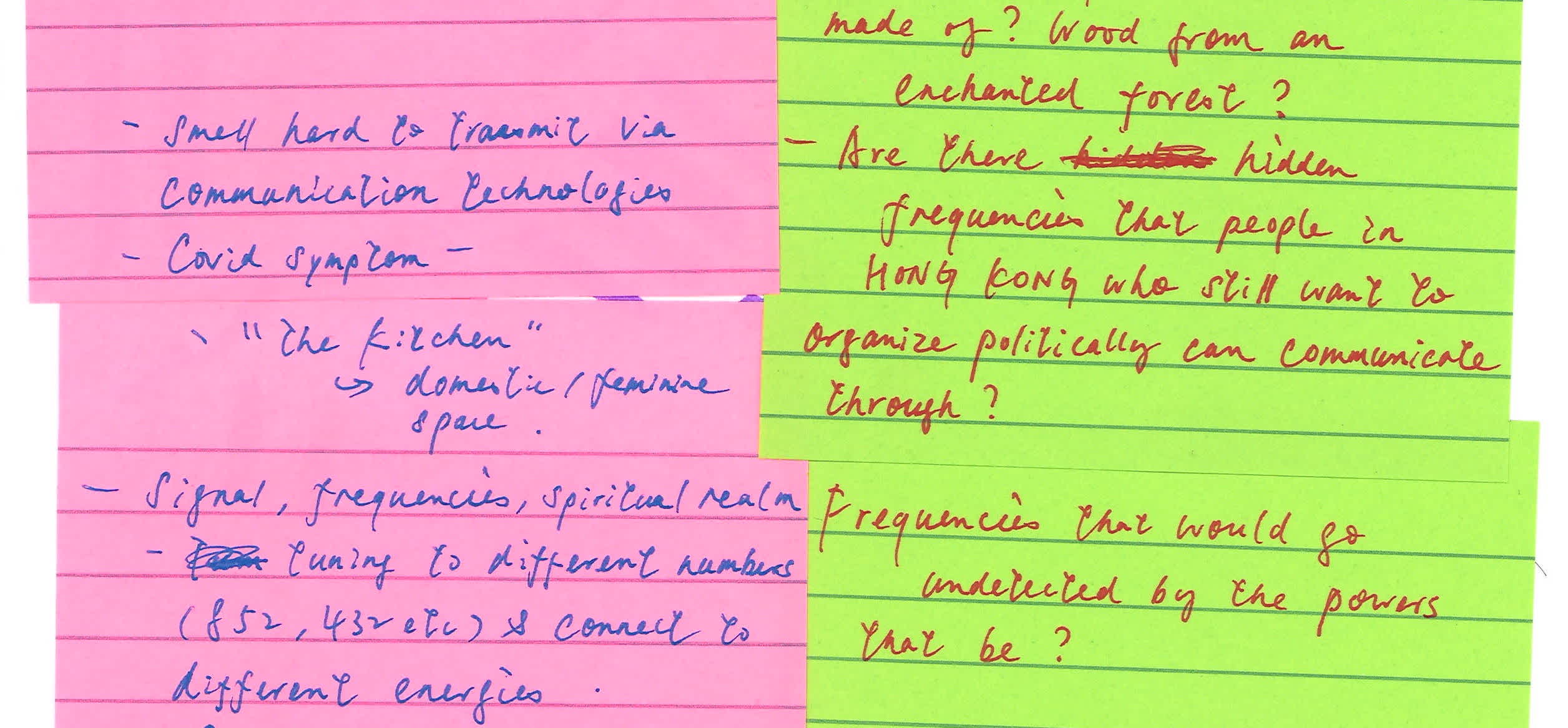
On View: December 20
This Video Viewing Room features artist Wong Kit Yi’s video Dial 432 to See the Light (2022), alongside a selection of materials from The Kitchen’s archive annotated by the artist. An introduction by Curator Alison Burstein reflects on the artist’s research process.
Wong Kit Yi: DIAL 432 TO SEE THE LIGHT (with Kitchen archive-inspired notes on TV funerals, bagpipes, traveling tape, hidden frequencies, and more) is organized by Alison Burstein, Curator.
INTRODUCTION
By Alison Burstein
Research: a term commonly associated with organized, accumulating knowledge. Yet its etymology opens onto another conception: research derives from words in Italian, ricercare, and French, recherche, which are derivatives from the Latin circare, meaning “go about, wander, traverse,” or, in Late Latin, “to wander hither and thither.” It is this spirit of open-ended, non-linear movement that defines Wong Kit Yi’s approach to research-based artistic practice. In Wong’s hands, every reference pulled from an archive, uncovered in the history of a site, or isolated from her lived experience becomes a point on an unfurling path of discovery—a process of ambling through ideas that harnesses the hither and thither of exploration as both a means and an end. The artist’s 2022 work-in-progress video essay Dial 432 to See the Light is emblematic of what emerges when she keys her working method to the specificities of a given context. Made while in residence at The Chinati Foundation in Marfa, Texas, the piece charts a network of affiliations that begins with facts related to the institution’s archive and geographical region and radiates outward into musings on intangible forces and spiritual realms.
With the Video Viewing Room DIAL 432 TO SEE THE LIGHT (with Kitchen archive-inspired notes on TV funerals, bagpipes, traveling tape, hidden frequencies, and more), Wong revisits the video as a launchpad for a new research project that she has embarked on in partnership with The Kitchen and Lofoten International Art Festival – LIAF 2024. For the initial phase of what will be a multi-part exploratory process, the artist has trained her attention on the institutional records housed in The Kitchen’s archive. Developing a strategy of using Dial 432 to See the Light as an alternative finding aid to guide her wanderings through the vast collection, Wong has been searching for linkages between the concepts that thread through the video and the impulses and investments that haven driven The Kitchen’s activities over the past fifty-plus years. The artist’s act of reverse engineering her earlier piece into a set of generative themes both animates Dial 432 to See the Light as an evolving work and gives rise to a provisional map of connections between a number of The Kitchen’s programs and administrative practices.
DIAL 432 TO SEE THE LIGHT (with Kitchen archive-inspired notes on TV funerals, bagpipes, traveling tape, hidden frequencies, and more) takes on the format of a process journal to offer a first glimpse into the artist’s ongoing endeavors. Structured according to overarching concepts, each section showcases archival selections the artist has annotated with markings, text, and video stills to reveal details or resonances that have piqued her curiosity. By illuminating Wong’s inquiries, observations, and speculations while still in formation, this presentation celebrates forms of knowledge that reveal themselves more through emergent correlations than through systematic investigation. While Wong continues to unfold her research in 2024, this Video Viewing Room will remain as a marker of where her hypotheses and findings have led her in December 2023, spotlighting one point along the path as she moves toward formulating as-yet-unknown narratives for future project iterations.
ARTIST’S NOTES:
LIGHT
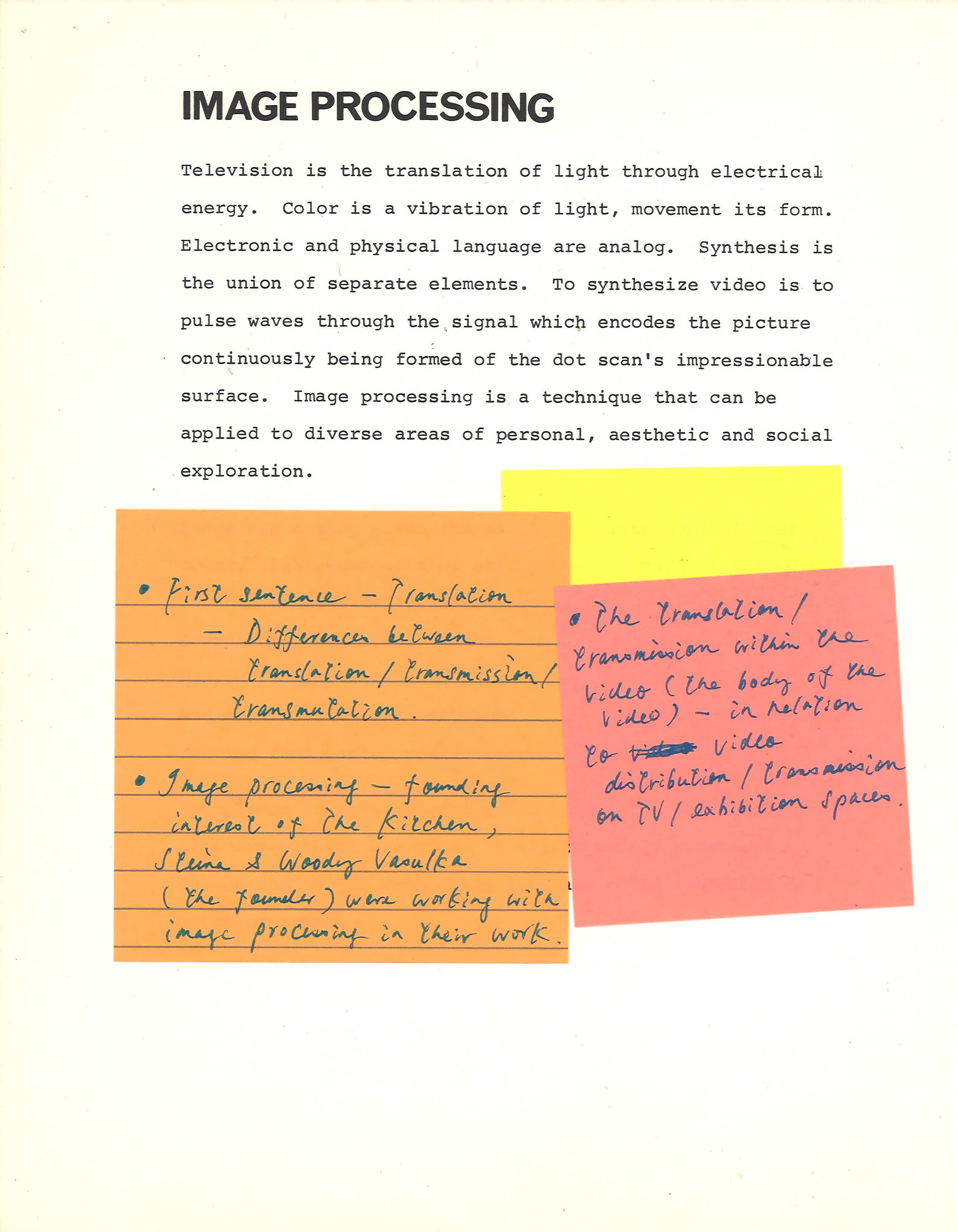
TV (FUNERAL)
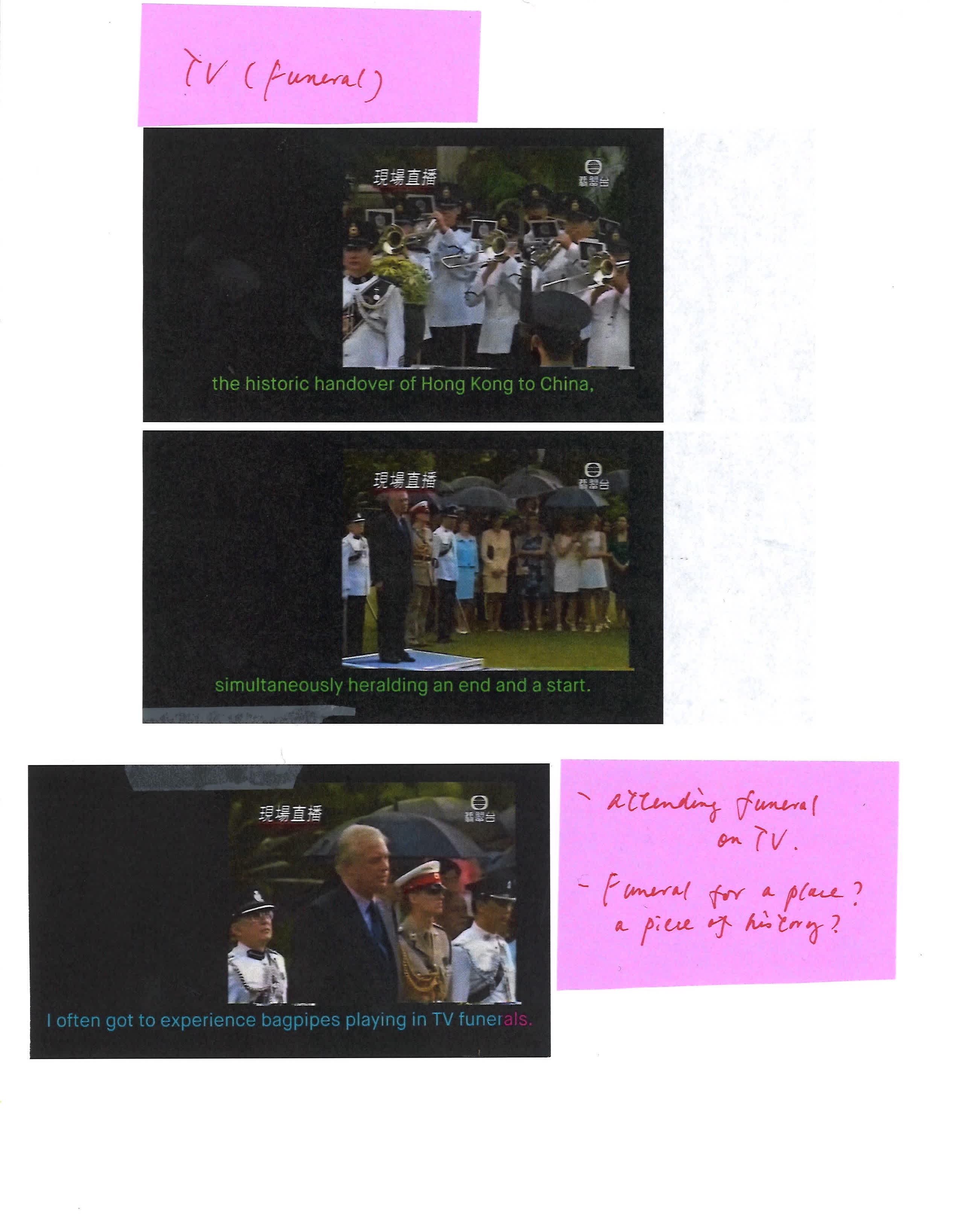

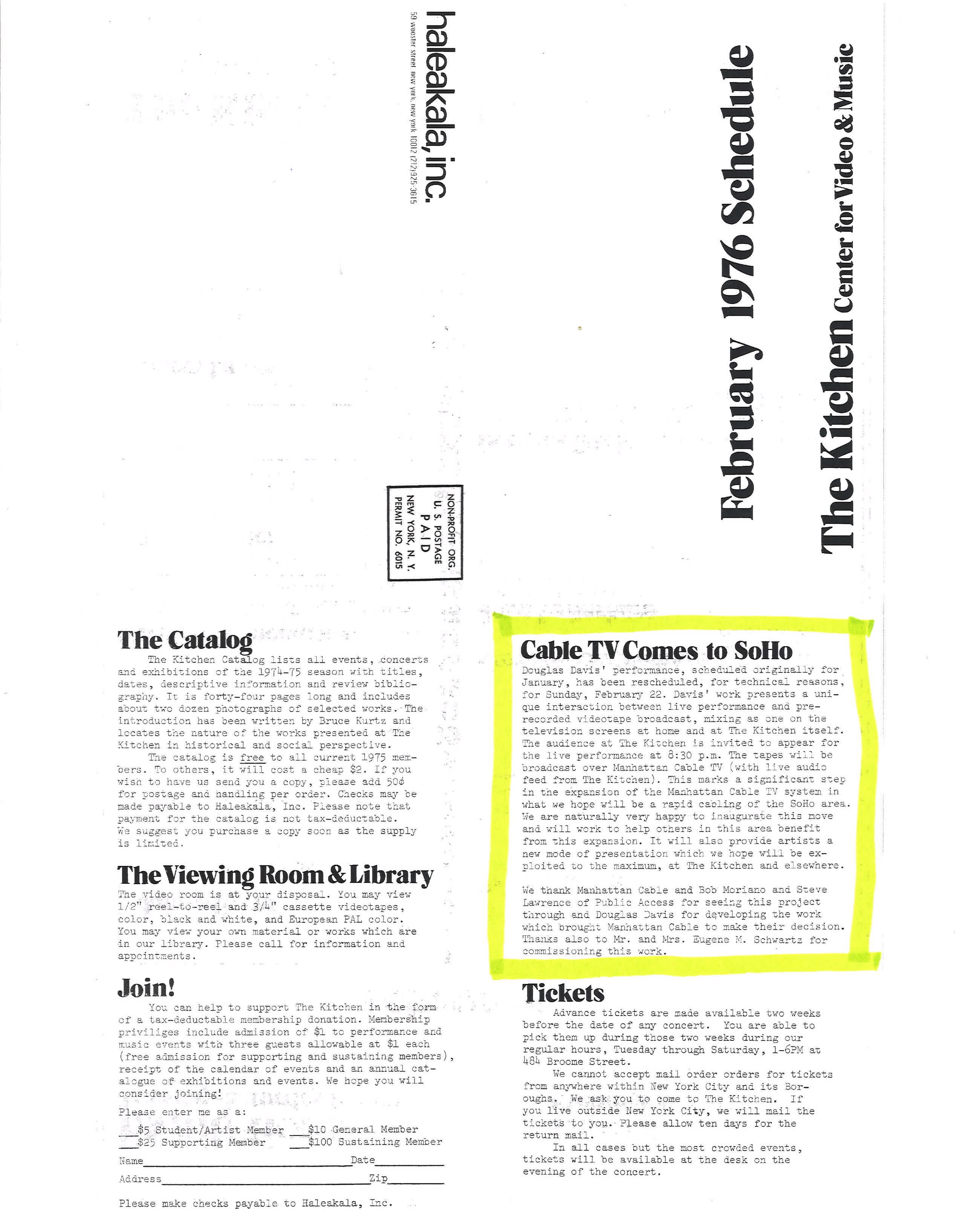
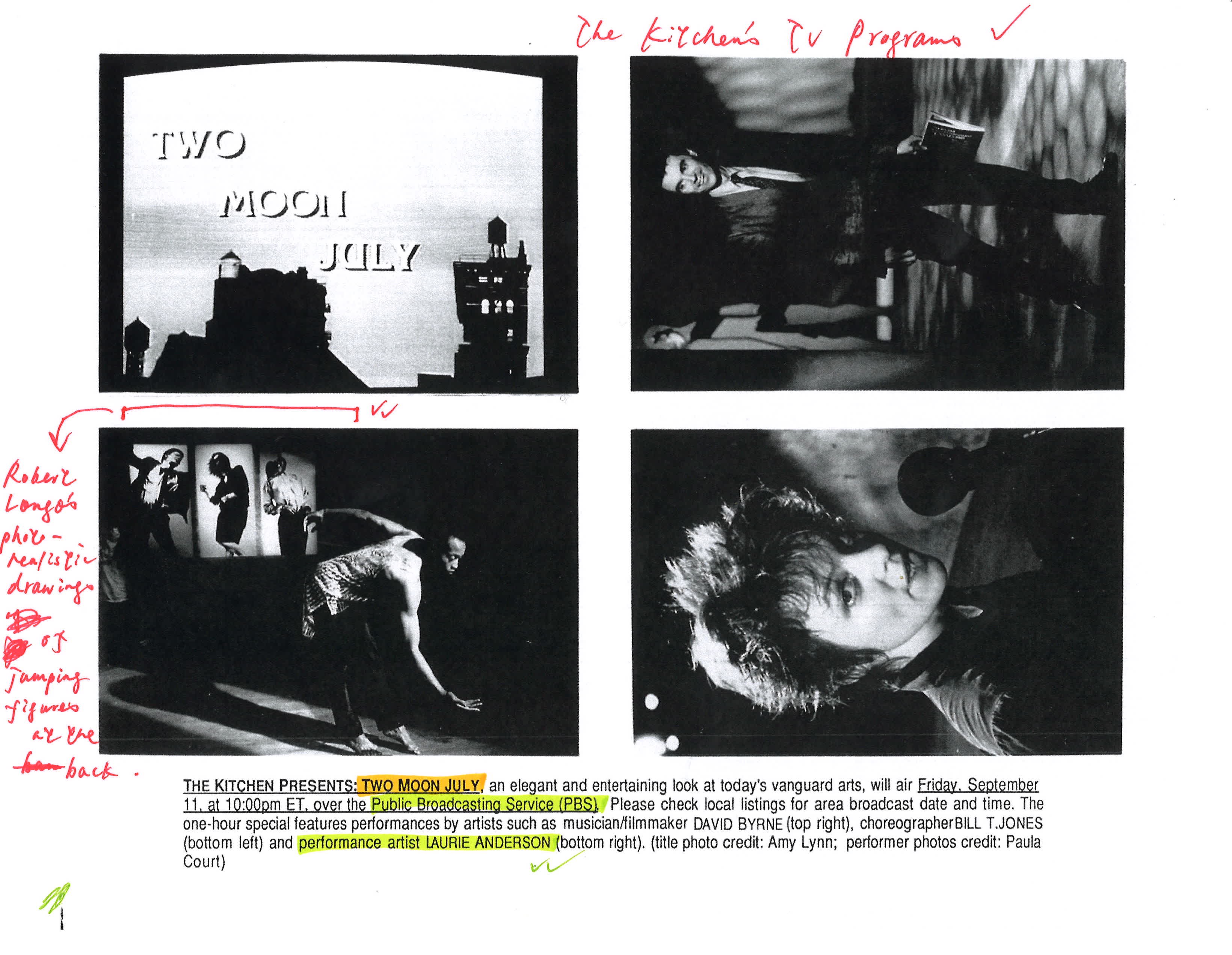
Pre-MTV? Or MUSIC VIDEO BEFORE IT KILLED THE RADIO STAR?
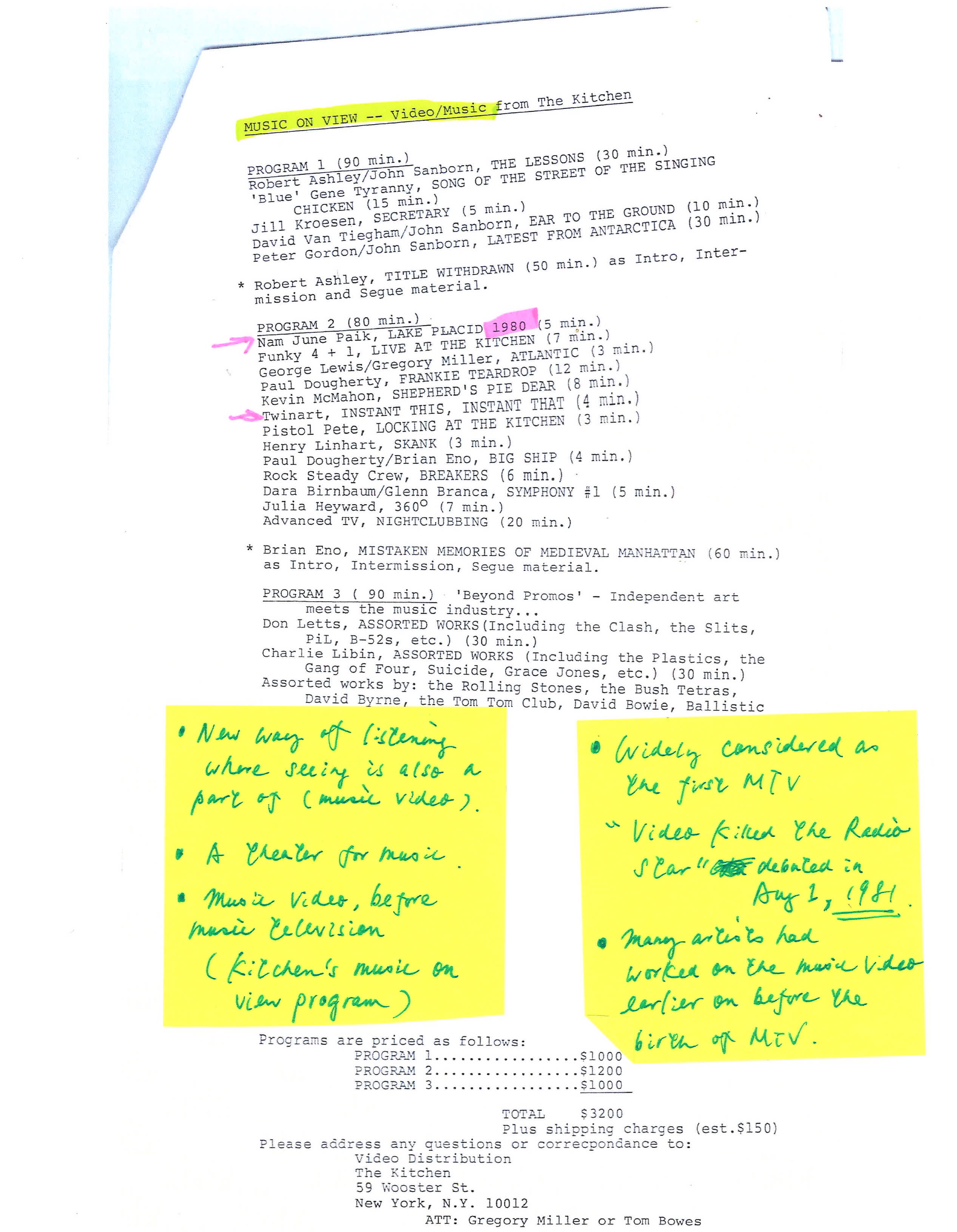
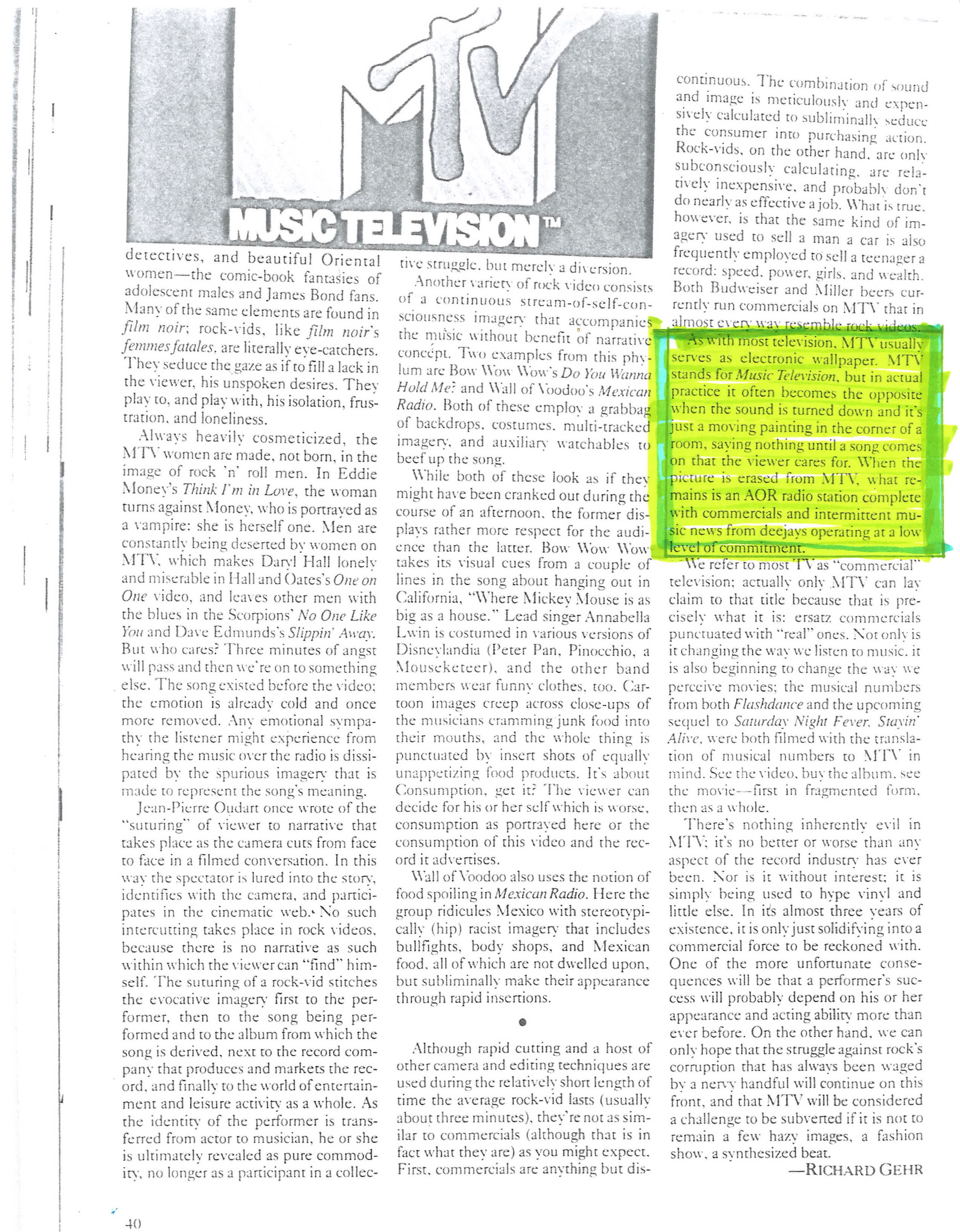
BAGPIPES



For ears: Yoshi Wada, Lament for the Rise and Fall of the Elephantine Crocodile, 1982
THE TRAVELING TAPE



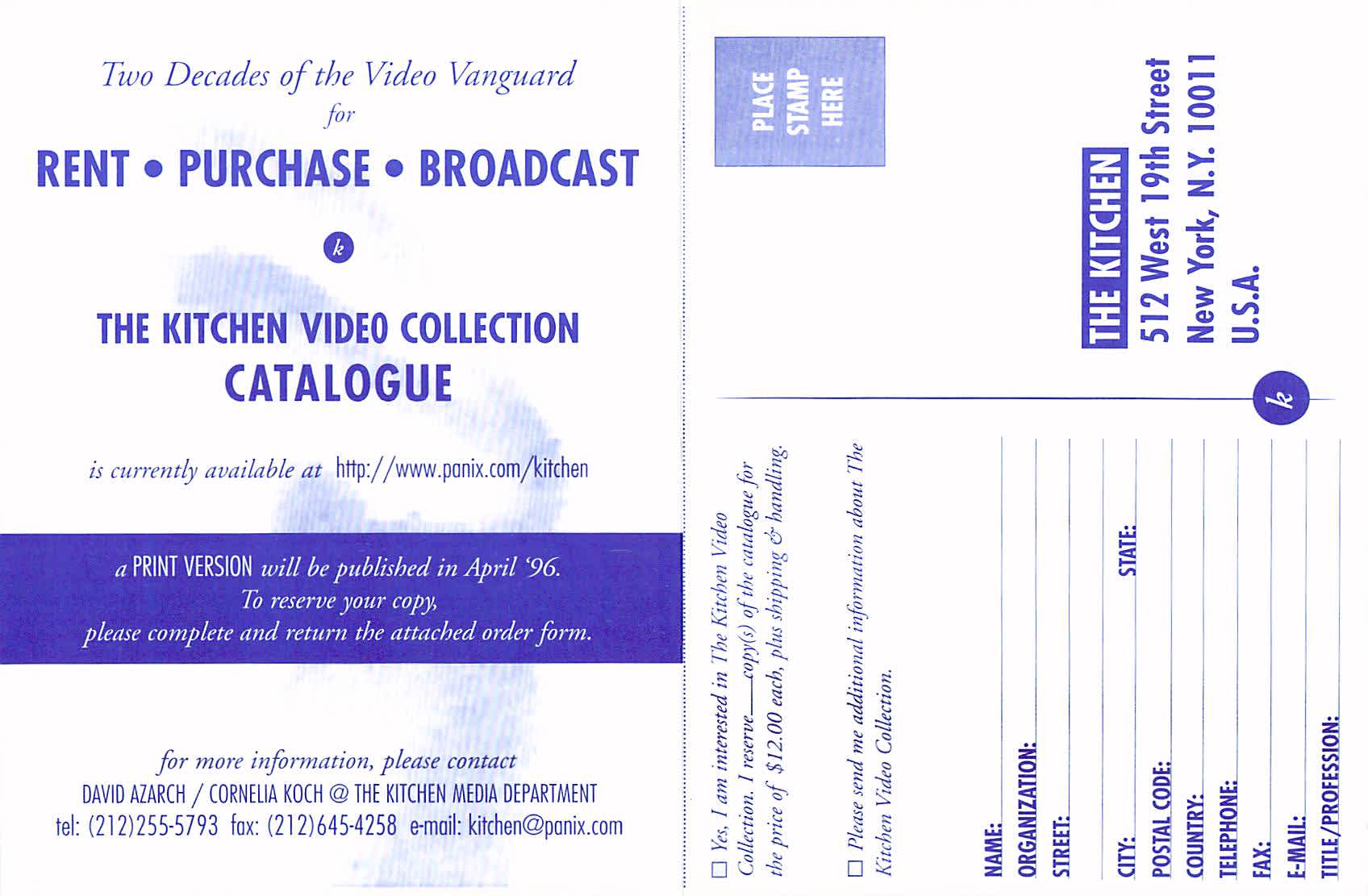
No longer for rent, but for interest: Excerpt from The Kitchen Video Collection Catalogue (1996)
NUMBERS


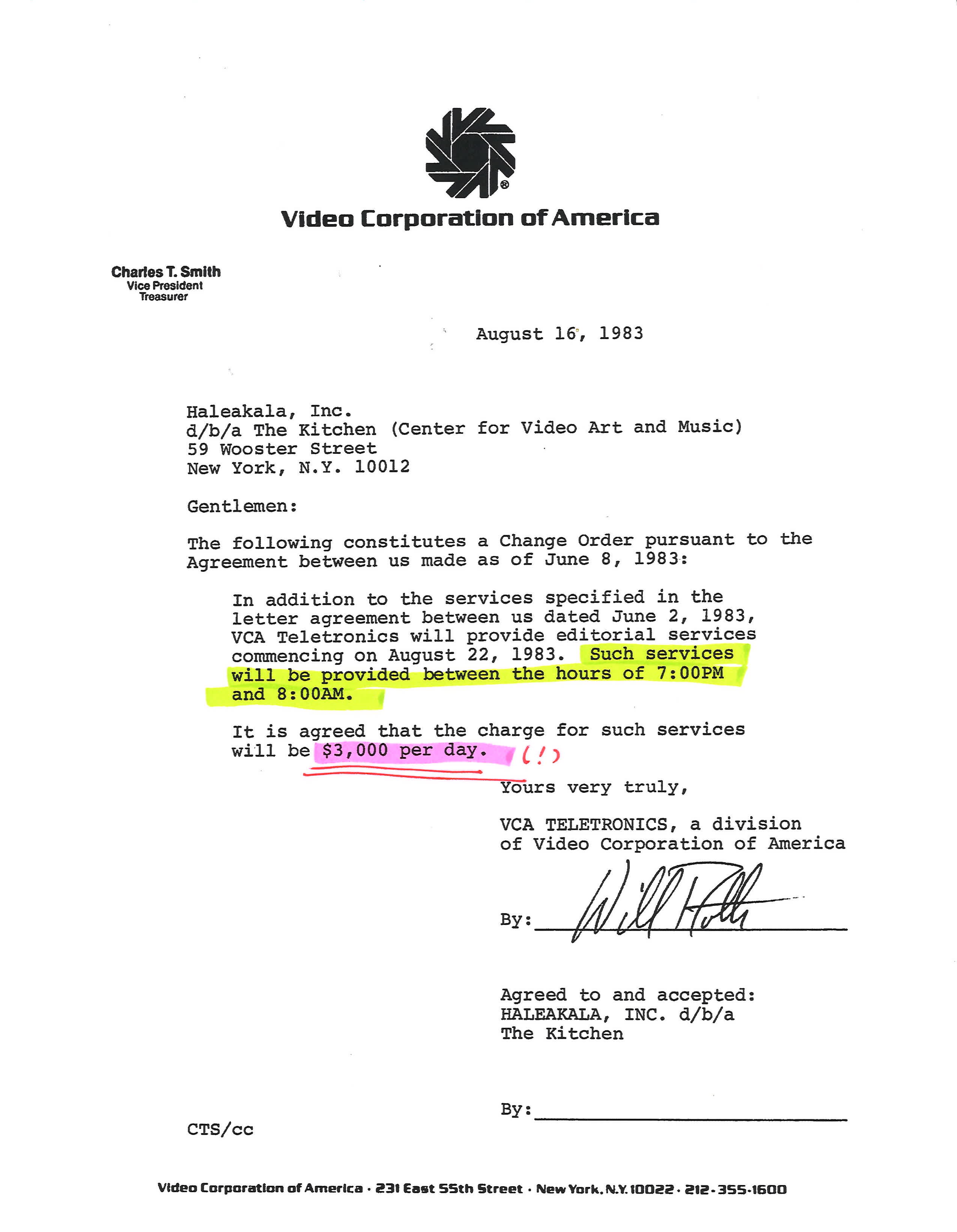
FUTURE!
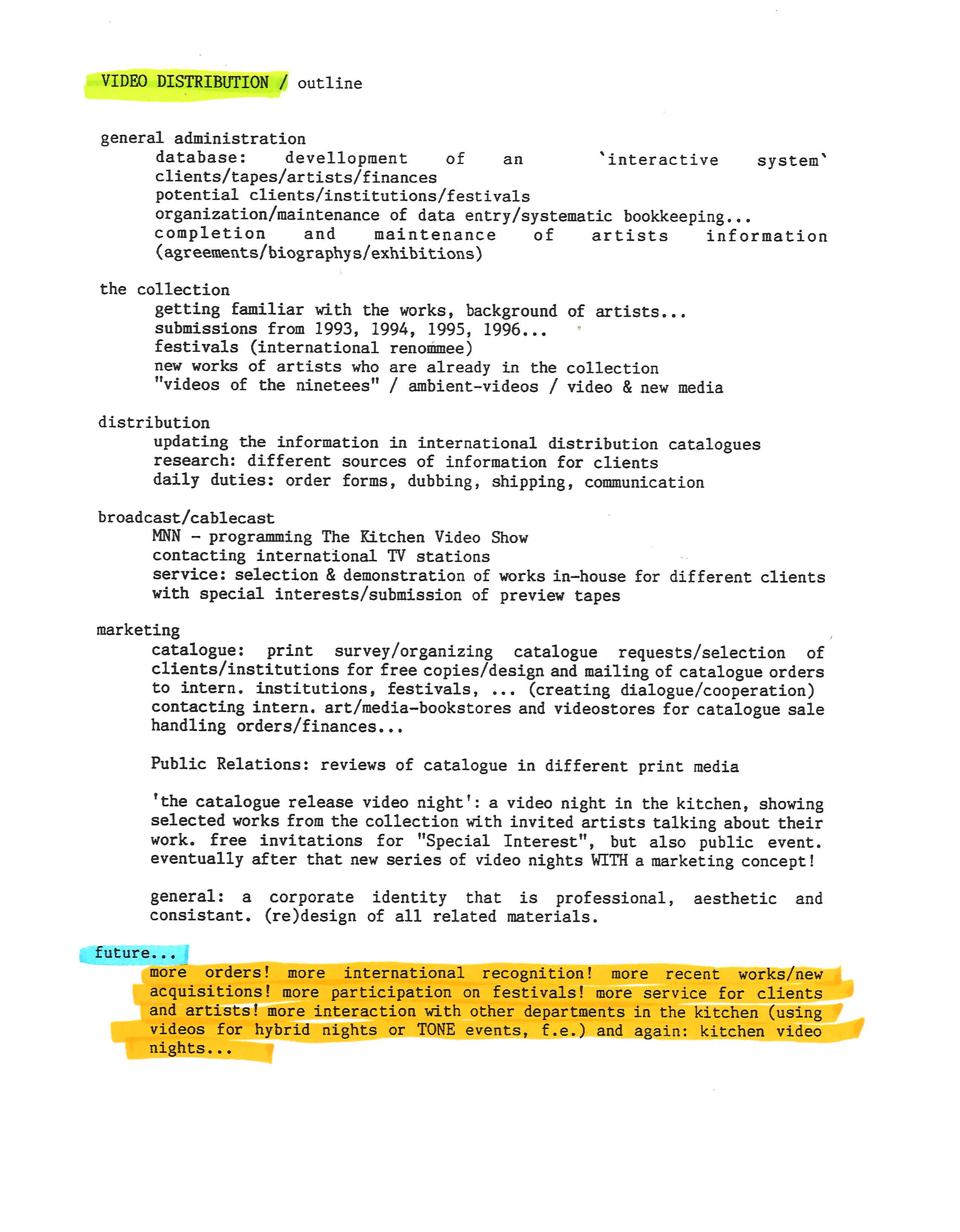
ALSO IN THE FUTURE

CITATIONS
LIGHT
Excerpt from informational packet on The Kitchen’s video programs, 1982. Notes added by Wong Kit Yi, 2023.
TV (FUNERAL)
Notes by Wong Kit Yi, 2023, with video stills from Wong Kit Yi, Dial 432 to See the Light, 2022. Courtesy of the artist and The Chinati Foundation.
Excerpt from informational packet on The Kitchen’s video programs, 1982. Emphasis added by Wong Kit Yi, 2023.
The Kitchen programming calendar, February 1976. Back. Emphasis added by Wong Kit Yi, 2023.
Promotional packet photo for The Kitchen Presents: Two Moon July, directed by Tom Bowes and produced by Carlota Schoolman, 1986. Emphasis and notes added by Wong Kit Yi, 2023.
Pre-MTV? Or MUSIC VIDEO BEFORE IT KILLED THE RADIO STAR?
Excerpt from information packet on Music on View—Video/Music from The Kitchen, c. 1982. Programs curated for The Kitchen by Tom Bowes, produced by Tom Bowes and Gregory Miller, touring coordinated by Joe Hannan. Emphasis and notes added by Wong Kit Yi, 2023.
Richard Gehr, “The MTV Aesthetic,” in Film Comment, Vol. 19, No. 4, July-August 1983, 40. Emphasis added by Wong Kit Yi, 2023.
BAGPIPES
Video stills from Wong Kit Yi, Dial 432 to See the Light, 2022. Courtesy of the artist and The Chinati Foundation.
Poster for Yoshi Wada, Lament for the Rise and Fall of the Elephantine Crocodile: Music for Very Large Floor-based Bagpipe at The Kitchen, May 12-13, 1980.
Album cover for Yoshi Wada, Lament for the Rise and Fall of the Elephantine Crocodile, 1982. Courtesy of the estate of Yoshi Wada. Yoshi Wada's estate maintains all rights.
THE TRAVELING TAPE
Excerpt from letter from artist Bill Viola to Tom Bowes, Video Director, The Kitchen, October 12, 1981. Emphasis and notes added by Wong Kit Yi, 2023.
Video still from Wong Kit Yi, Dial 432 to See the Light, 2022. Courtesy of the artist and The Chinati Foundation.
Postcard order form for The Kitchen Video Collection Catalogue, c. 1996. Front and back.
NUMBERS
Excerpt from informational packet on The Kitchen’s video programs, 1982. Emphasis added by Wong Kit Yi, 2023.
The Kitchen, Video Distribution Price List, 1990. Notes added by Wong Kit Yi, 2023, and video still from Wong Kit Yi, Dial 432 to See the Light (2022). Courtesy of the artist and The Chinati Foundation.
Letter from VCA Teletronics to The Kitchen, August 16. 1983. Emphasis added by Wong Kit Yi, 2023.
FUTURE!
The Kitchen, outline for Video Distribution program, c. 1996-1997. Emphasis added by Wong Kit Yi, 2023.
ALSO IN THE FUTURE
Notes by Wong Kit Yi, 2023, with video stills from Wong Kit Yi, Dial 432 to See the Light, 2022. Courtesy of the artist and The Chinati Foundation.
BIO
Wong Kit Yi lives and works between New York and Hong Kong. Her works have been included in projects organized by M+ (Hong Kong, 2023); Tate Modern (London, 2023); FRONT Triennial (Cleveland, 2022); Tai Kwun Contemporary (Hong Kong, 2021); Public Art Fund (New York, 2020); Para Site (Hong Kong, 2019); Surplus Space (Wuhan, 2018); the Latvian Centre for Contemporary Art (Riga, 2017). She was a resident in the Chinati Foundation Artist in Residence program (Marfa, 2021) and received an MFA from Yale University. She has taught university courses about performance, video art, and new media and currently teaches at the School of Visual Arts (New York) in the MFA Fine Arts program. Even when not teaching, she can’t quit lecturing people, and continues to do so in her signature karaoke-inspired lecture format. She is the co-chair of LASER (Leonardo Art Science Evening Rendezvous) Hong Kong, and a die-hard member of KFC(kombucha fan club).
Video Viewing Room was initiated with the support of the NYC COVID-19 Response and Impact Fund in The New York Community Trust; annual grants from Lambent Foundation Fund of Tides Foundation and Howard Gilman Foundation; and in part by public funds from New York City Department of Cultural Affairs in partnership with the City Council and New York State Council on the Arts with the support of the Office of the Governor and the New York State Legislature.